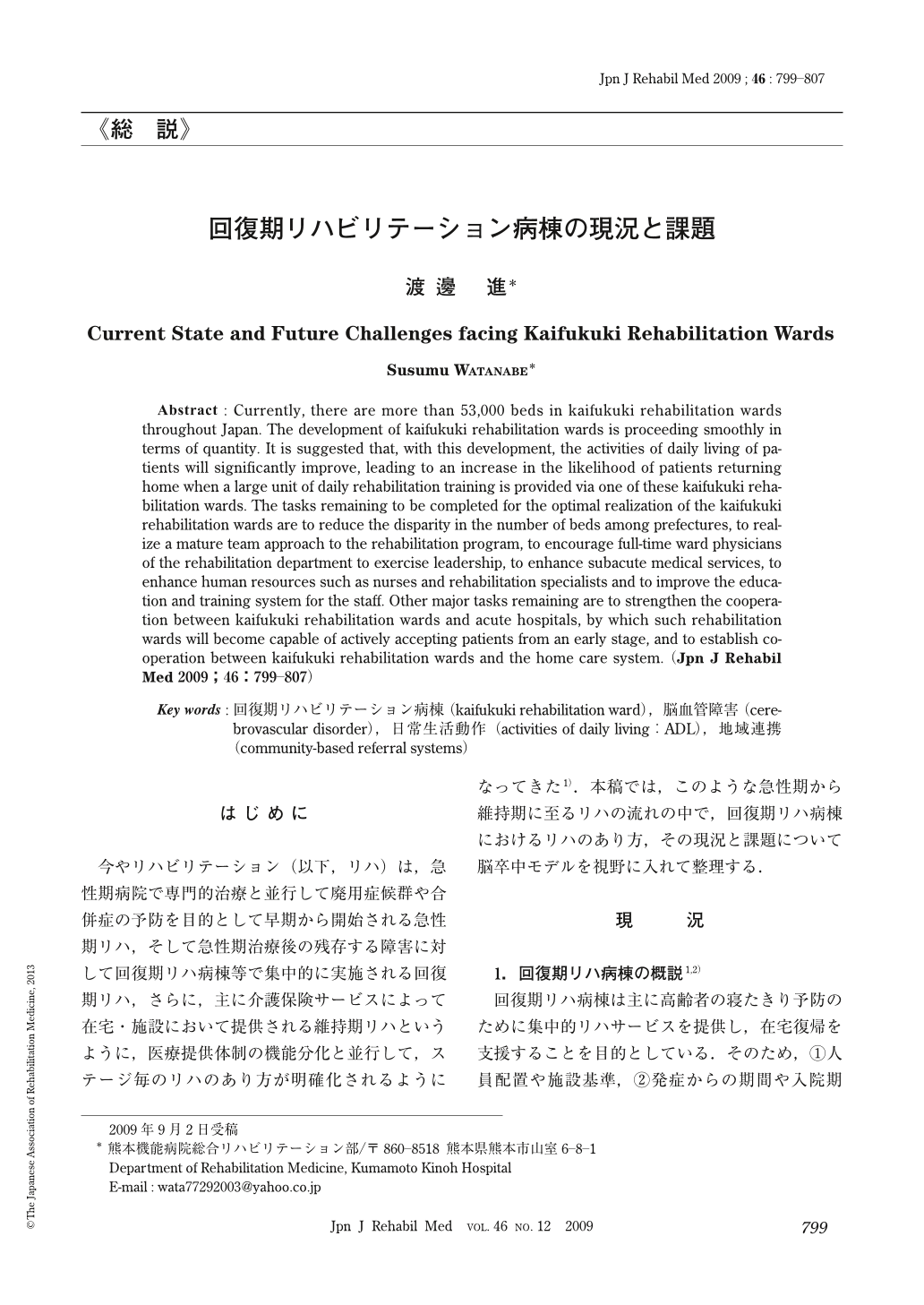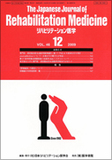Japanese
English
- 販売していません
- Abstract 文献概要
- 1ページ目 Look Inside
- 参考文献 Reference
はじめに
今やリハビリテーション(以下,リハ)は,急性期病院で専門的治療と並行して廃用症候群や合併症の予防を目的として早期から開始される急性期リハ,そして急性期治療後の残存する障害に対して回復期リハ病棟等で集中的に実施される回復期リハ,さらに,主に介護保険サービスによって在宅・施設において提供される維持期リハというように,医療提供体制の機能分化と並行して,ステージ毎のリハのあり方が明確化されるようになってきた1).本稿では,このような急性期から維持期に至るリハの流れの中で,回復期リハ病棟におけるリハのあり方,その現況と課題について脳卒中モデルを視野に入れて整理する.
Abstract : Currently, there are more than 53,000 beds in kaifukuki rehabilitation wards throughout Japan. The development of kaifukuki rehabilitation wards is proceeding smoothly in terms of quantity. It is suggested that, with this development, the activities of daily living of patients will significantly improve, leading to an increase in the likelihood of patients returning home when a large unit of daily rehabilitation training is provided via one of these kaifukuki rehabilitation wards. The tasks remaining to be completed for the optimal realization of the kaifukuki rehabilitation wards are to reduce the disparity in the number of beds among prefectures, to realize a mature team approach to the rehabilitation program, to encourage full-time ward physicians of the rehabilitation department to exercise leadership, to enhance subacute medical services, to enhance human resources such as nurses and rehabilitation specialists and to improve the education and training system for the staff. Other major tasks remaining are to strengthen the cooperation between kaifukuki rehabilitation wards and acute hospitals, by which such rehabilitation wards will become capable of actively accepting patients from an early stage, and to establish cooperation between kaifukuki rehabilitation wards and the home care system.

Copyright © 2009, The Japanese Association of Rehabilitation Medicine. All rights reserved.


